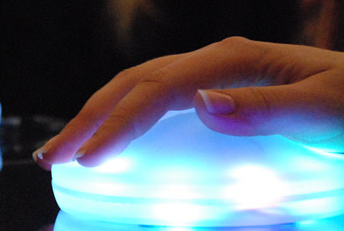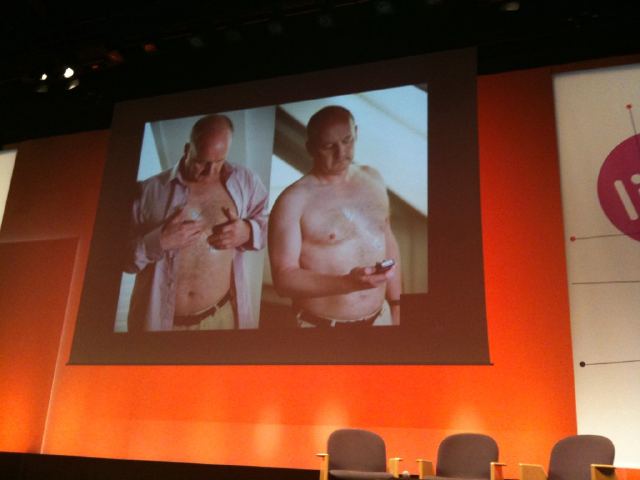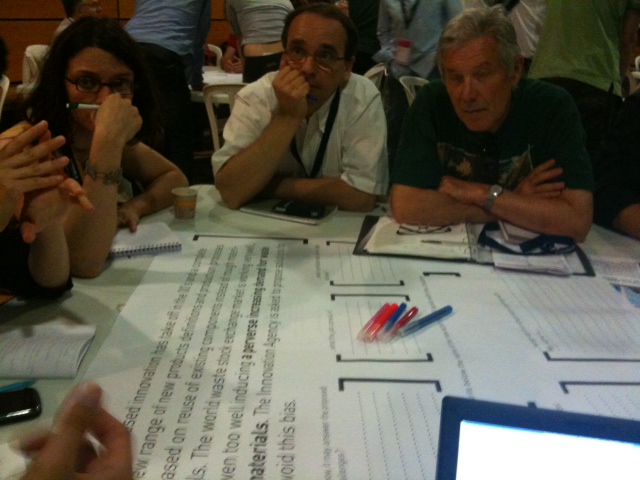A new platform has just been launched in beta. It is called Imagination for people, a collaborative platform dedicated to social innovation. The projects listed on the platform have to be for the public good, they have to be disruptive (so a “worldwide first”) and it needs to be able to scale.
We were presented with eight different ideas in this vein:
- La Ruche qui dit Oui a way to disintermediate wholesalers and supermarkets from the farmer client relationship by creating “hives” of consumers that pool their demand.
- Mocaplab does motion capture services. He is talking about using motion capture to create a tool to record, play and edit the natural language of many deaf people: sign language. This is a challenge because you need to capture the motion of not only the fingers and hands, but also the face and eye movements. I find this completely fascinating. One thing I wonder about though is what standard you would use to digitise the language, how else will you be able to synthesize the language.

- Fivefive, “the emotional experience”, is an attempt to create sensitive and emotional devices that enhance the way people communicate over the Internet. Our current interface devices don’t allow us to create real presence remotely. It is an object that looks like a pebble, that will produce light when you touch it. You would use it in pairs. It will add an extra dimension to your communications and might actually create a new type of language.
- A project by the Digital Empowerment Foundation to bring digital technology to weaver communities in India. This allows them to get more value out of the total chain that profits from their work. They have four problems: Not enough money to buy raw materials, not enough skills to design the clothes, no way to find a market to retail their products and a younger generation that doesn’t belief you can earn a living with weaving. The digital technology helps them capturing and storing designs and contains an ecommerce website helping sell the weaves. Each aspect is organized in self-help groups, so that there is a sense of ownership and sustainability.
- Exposition au Danger Psychologique is an (art) project by Emmanuel Germond aiming to prevent psychological harm from just not talking to each other anymore. Currently there is a online form where you can rate your own exposure to psychological danger, which will then allow for preventative measures and treatments (like extra-marital sex or a D-tox box). Check out the EPD Observatory to learn more.
- Neen or Non-verbal Emotional Experience of Notification. He used the metaphor of a door to create new forms of presence (“open doors for close communication”). This short video summarizes the main theme of the project.
- A project that creates a new definition of “health” for a new generation of digital native patients. It consists of multiple smaller on the edges between the social sphere, the physical sphere and the cognitive sphere. Read more here.
- Eli Commins has developed the Breaking project. Commins tells the story of how he followed an Iranian young man on Twitter who wasn’t at all interested in the electoral process going on there. As the electoral process continued the young man slowly started to become an activitist. Commins then decided to get together a diverse set of testimonies from Iran and try and find a way to visualize this on stage.


